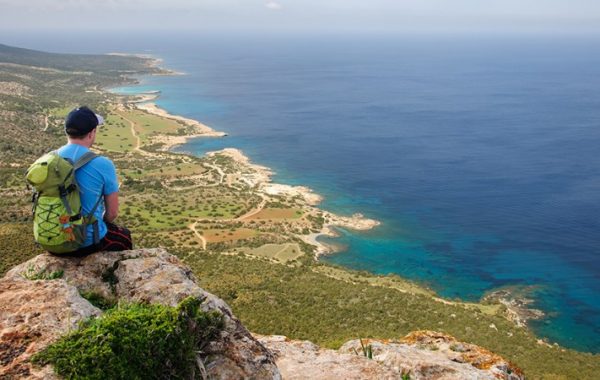Pambos, a satellite-tagged loggerhead turtle named by the Bycatch Project team, is proving to be a great wanderer, with ‘romance’ the apparent driving force!
One of the biggest threats seabirds and other marine animals are facing is being incidentally killed as ‘bycatch’ in fisheries. Through the Cyprus Bycatch Project, we aim to understand the magnitude of the bycatch problem here in Cyprus and develop solutions.
Together with analysing bycatch levels and proposing mitigation measures, several capacity-building and outreach activities are also planned to ensure fishers and civil society groups benefit from the project findings throughout its 3-year duration. One of these activities uses satellite tracking and dive recording of locally foraging loggerhead and green turtles using GPS and dive data-logging satellite transmitters.
Biologists at the Society for the Protection of Turtles (SPOT), one of our project partners, have identified Famagusta Bay as a sea turtle bycatch hotspot. Through the Cyprus Bycatch Project, fishers declare their bycatch of turtles and other vulnerable species to the project team. Loggerhead turtles and green turtles found caught in fishing gear are saved by the fishermen themselves and are tracked using cutting-edge satellite-linked GPS data-loggers and dive computers. Meanwhile, drone surveys over the bay are providing us with more information on the turtles’ position and abundance. Our aim is to understand in detail how sea turtles foraging in Famagusta Bay interact with set net fisheries. This information will help us develop mitigation measures that would protect many turtles from being caught in fishing gear, while minimising impact on the fisheries livelihoods.
So far, 12 turtles are being tracked, with most of them having being named by the fishers themselves. One turtle, however, that goes by the name ‘Pambos’ has caught our eye. Pambos is a 43 kg male loggerhead turtle with a carapace length of 71 cm and was hauled in trammel nets that target siganids, last March. Unlike the other turtles, Pambos seemed to be moving about a lot, moving up and down the Famagusta coast during the first weeks of tracking, occasionally settling around the Marine Protected Area of Cape Greco. On 19 April, Pambos rounded Cape Greco and headed for Episkopi Bay, which he reached by 24 April. He then spent a month there paddling about Episkopi Bay and then off he went towards Pafos Airport. By 30 May, he was departing the island westward and at the time of writing he is near Tunisia!
Pambos’ peculiar behaviour suggests that he is a breeding migrant who travelled to Cyprus to mate, and not a resident foraging turtle. It is exciting to think that during the next two months his offspring will be born on our sandy beaches. And we hope that, through our bycatch project, these young turtles will be safer from being caught as bycatch.




